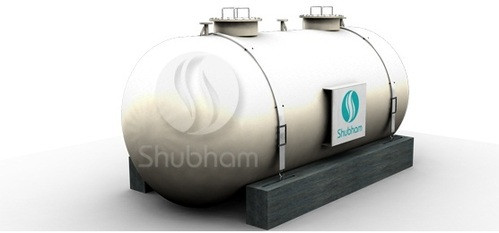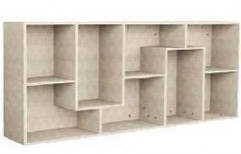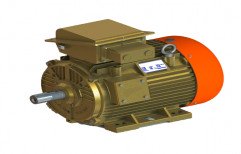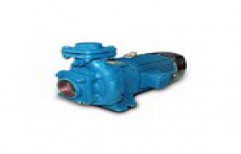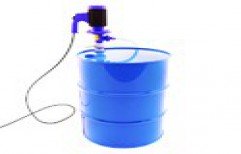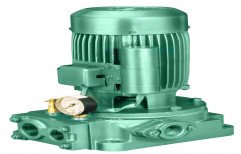Featured Suppliers
How it works
- Submit an enquiry to a product.
- Wait for a call from nearest supplier from your area.
- Get quote and product details.
- Choose best from them.
Recently Added Suppliers
Product Description
A septic tank means any watertight, covered receptacle that is designed and constructed to receive the discharge of sewage from a building sewer or preceding tank, stores liquids for a detention period that provides separation of solids from liquid and digestion of organic matter, and allows the efuent to discharge to a succeeding tank, treatment device, or soil dispersal system. Septic systems don't require the installation of miles of sewer lines, making them less disruptive to the environment.
Our unique design of Septic tanks ensures the maximum hydraulic retention time of incoming sewage which provide effective settlement of organic & inorganic impurities and outlet waste water of septic tanks can be discharged to soak pit or treated further for reuse applications. Shubham septic tanks are available from 5000 Liters to 50000 Liters volumes which is equivalent to 25 PE to 250 PE. These strong, durable, non-corrosive, pre engineered, pre-assembled units minimize installation and start-up costs.
Operating Principle:
A septic system consists of two main parts-a septic tank and a drain field. The septic tank is a watertight box, usually made of coated Steel, concrete or fiberglass, with an inlet and outlet pipe. Wastewater flows to the septic tank through the sewer pipe. The septic tank treats the wastewater naturally by holding it in the tank long enough for solids and liquids to separate. The wastewater forms three layers inside the tank. Solids lighter than water (such as greases and oils) float to the top forming a layer of scum. Solids heavier than water settle at the bottom of the tank forming a layer of sludge. This leaves a middle layer of partially clarified wastewater.
The layers of sludge and scum remain in the septic tank where bacteria found naturally in the wastewater work to break the solids down. The sludge and scum that cannot be broken down are retained in the tank until the tank is pumped. The layer of clarified liquid flows from the septic tank to the drainfield or to a distribution device, which helps to uniformly distribute the wastewater in the drainfield. A standard drainfield (also known as a leachfield, disposal field, or a soil absorption system) is a series of trenches or a bed lined with gravel or course sand and buried one to three feet below the ground surface. Perforated pipes or drain tiles run through the trenches to distribute the wastewater.
The drainfield treats the wastewater by allowing it to slowly trickle from the pipes out into the gravel and down through the soil. The gravel and soil act as biological filters.
Features
Advantages
Applications:
Our unique design of Septic tanks ensures the maximum hydraulic retention time of incoming sewage which provide effective settlement of organic & inorganic impurities and outlet waste water of septic tanks can be discharged to soak pit or treated further for reuse applications. Shubham septic tanks are available from 5000 Liters to 50000 Liters volumes which is equivalent to 25 PE to 250 PE. These strong, durable, non-corrosive, pre engineered, pre-assembled units minimize installation and start-up costs.
Operating Principle:
A septic system consists of two main parts-a septic tank and a drain field. The septic tank is a watertight box, usually made of coated Steel, concrete or fiberglass, with an inlet and outlet pipe. Wastewater flows to the septic tank through the sewer pipe. The septic tank treats the wastewater naturally by holding it in the tank long enough for solids and liquids to separate. The wastewater forms three layers inside the tank. Solids lighter than water (such as greases and oils) float to the top forming a layer of scum. Solids heavier than water settle at the bottom of the tank forming a layer of sludge. This leaves a middle layer of partially clarified wastewater.
The layers of sludge and scum remain in the septic tank where bacteria found naturally in the wastewater work to break the solids down. The sludge and scum that cannot be broken down are retained in the tank until the tank is pumped. The layer of clarified liquid flows from the septic tank to the drainfield or to a distribution device, which helps to uniformly distribute the wastewater in the drainfield. A standard drainfield (also known as a leachfield, disposal field, or a soil absorption system) is a series of trenches or a bed lined with gravel or course sand and buried one to three feet below the ground surface. Perforated pipes or drain tiles run through the trenches to distribute the wastewater.
The drainfield treats the wastewater by allowing it to slowly trickle from the pipes out into the gravel and down through the soil. The gravel and soil act as biological filters.
Features
- Two chamber design.
- Diameters ranging from 1.8 to 2.40mts.
- Large area for sludge storage.
- Underground installation.
- Smooth internal black coating prevents bacteria and algae growth inside the tank.
- Inlet, outlet and drain connections for easy installation.
- Smells are vented back to the soil vent pipe. Through the drains and NOT through the lids.
- Two access points for emptying.
- Easy access to the 90 degree bends on the 'T' pipes inside the septic tank
- Available with different inlet and outlet options.
- Effluent Filter - can be fitted in the outlet to keep the soak away clean.
Advantages
- Eco-friendly
- Rust proof and Leak proof
- Durable
- Light weight and easy to transport
- Easy to install
- Economical than conventional septic system
- Excellent performance on reduction of BOD
- Less pollution
- Odourless
Applications:
- Residential bungalows & societies
- Institution and commercial buildings

